Guidebooks don’t say much about Puerto del Rosario, the capital of Fuerteventura. Lonely Planet calls it ‘a strange city with no discernible centre’. With around 40,000 inhabitants, it’s more the size of a town than a city and the ‘strange’ tag is a bit harsh. I like Puerto del Rosario. It’s got an honest, relaxed workaday charm. And it boasts a couple of beaches, with Playa del Pozos filling the role of an attractive urban beach.
It’s also got some groovy sculptures dotted around, over 100 in fact; an initiative to turn Puerto del Rosario into an open air art gallery.
We didn’t manage to clock up a hundred but we did get round quite a few, which incidentally is a good way to get to know the centre of Puerto del Rosario (yes, Lonely Planet, there is one).
Caracolas
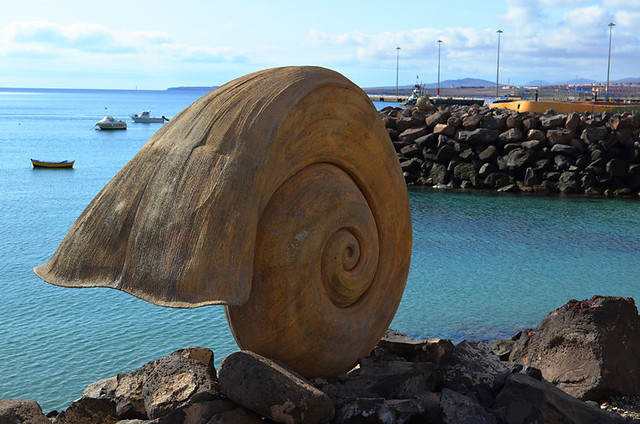
The Caracolas are a collection of mutant sea creatures along the seafront that represent the connection Puerto del Rosario has with the sea. At first I thought one was a dragon lounging on the rocks.
Equipaje de Ultramar
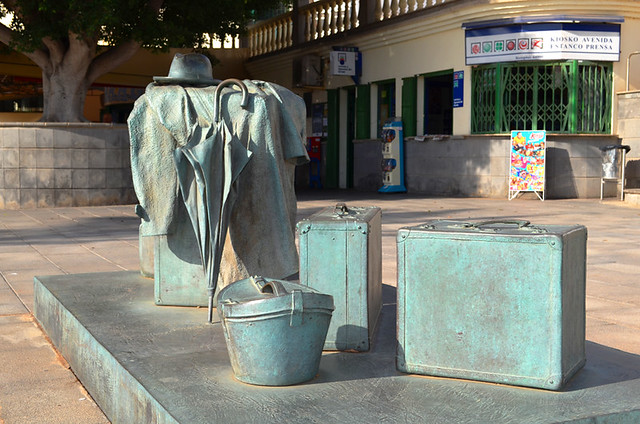
This sculpture pays homage to the Majoreros (folk from Fuerteventura) who emigrated to distant shores (usually South American ones) during times of hardship. You find these in towns all over the Canary Islands but this is one of my favourites.
Fuente de la Explanada
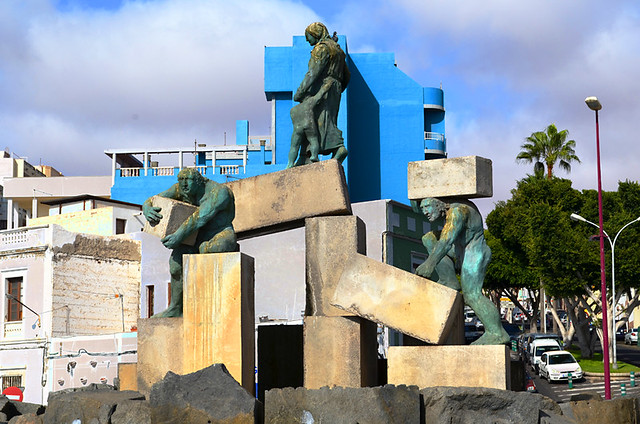
The message of this sculpture by the port is that this was the centre of trading and fishing. I know it’s hot in the Canary Islands but I didn’t realise that they didn’t wear any clothes when they brought goods from the merchant ships ashore.
Podenco Canario
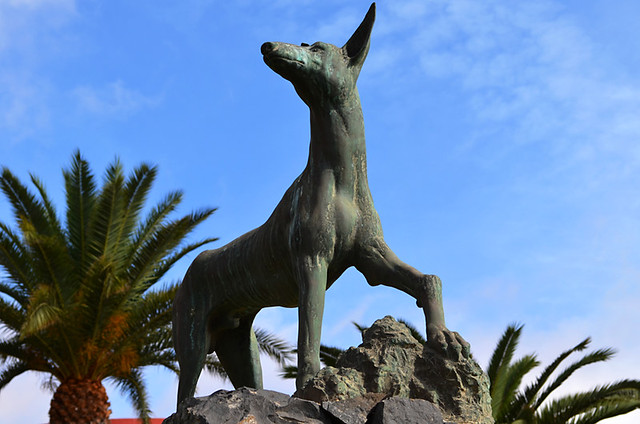
A bronze tribute to a hunting dog with a lovely temperament, the podenco. It’s also a very old breed of dog, the resemblance to Egyptian hounds is quite plain to see. They’re still used a lot on the islands, mainly to hunt rabbits. Conejo en salmorejo anyone?
Pescador de Viejas
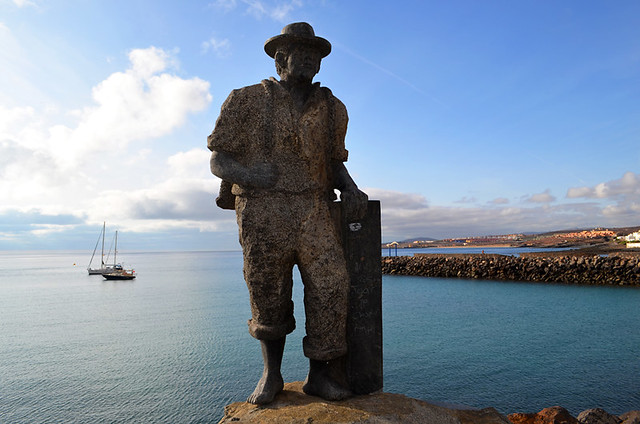
The old fisherman heading off barefoot at Playa de los Pozos to catch some viejas (parrot fish) with his palm basket on his back to carry them home. It’s still more or less the same garb worn by some pescadores today.
El Aguador
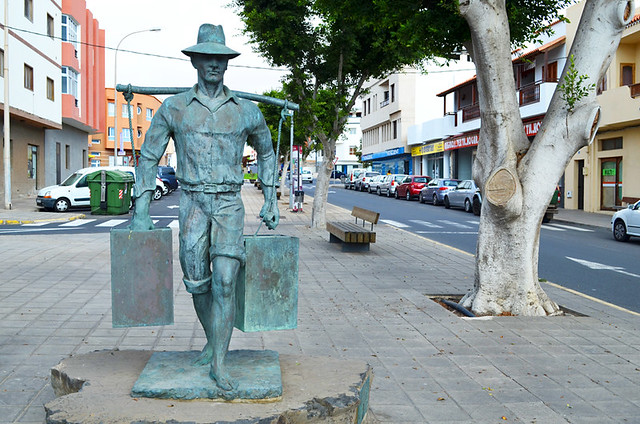
Away from the coast is the water carrier, carrying 20 litres of water in each container, destined for the thirsty residents . El Aguador was an essential visitor to the town until the late 1960s.
Suso Machín

At first I thought this was an old guy looking for a handout but it is Suso Machín, a famous local artist who captured the best of Puerto del Rosario on canvas many times when it was known as Puerto de Cabras (the port of goats). I think I prefer the former name.
Las Cabras
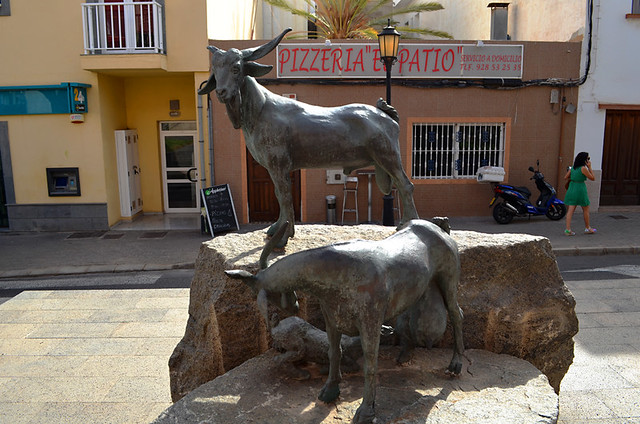
On an island renowned for its goats’ cheese, you’ve got to have a statue honouring goats. This one is in front of the town hall, in the spot where goats were once watered.
Las Cabras part 2
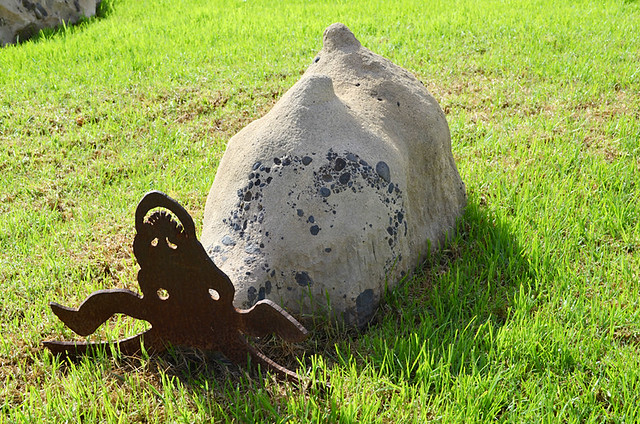
However, I like these goat sculptures better. Very silly and clever.
Bryde’s Whale
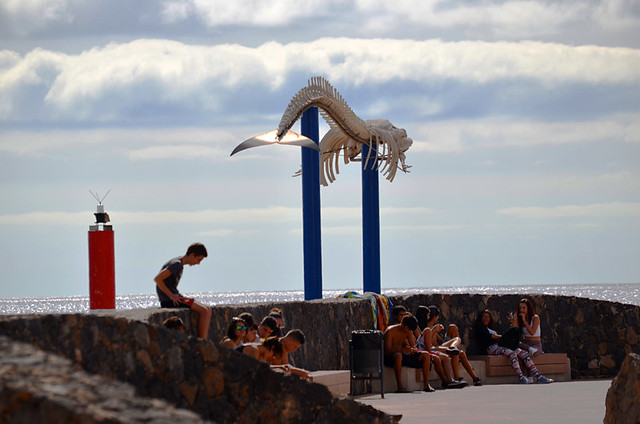
A natural sculpture constructed from the bones of a 9 metre young Bryde’s Whale, discovered dead in nearby waters. There are a few of these sculptures on the Canary Islands and all tend to represent the same thing; a monument to the sea and the creatures who dwell in it.
The Girls
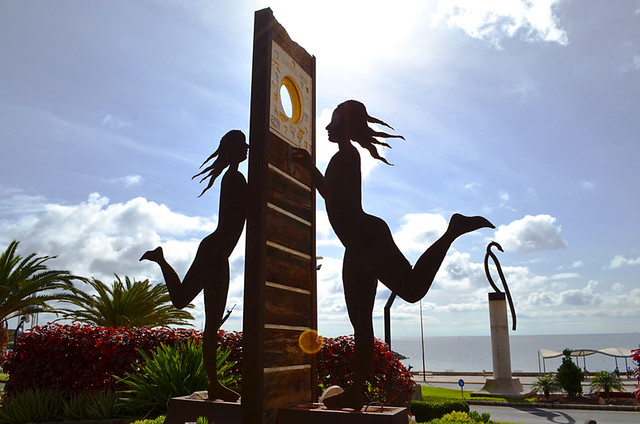
And finally, I don’t know who they are or what they’re called but they look as though they’re having a lot of fun.
That’s the beauty of going on a sculpture trail in Puerto del Rosario. Some sculptures are marked on an official trail, others you just stumble across.
Maybe it was because of some of the more surreal examples that Lonely Planet dubbed it a strange city.
Jack is co-owner, writer and photographer for BuzzTrips and the Real Tenerife series of travel websites as well as a contributor to lots of other places. Follow Jack on Google+


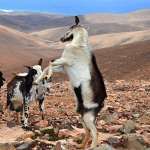

Be the first to comment